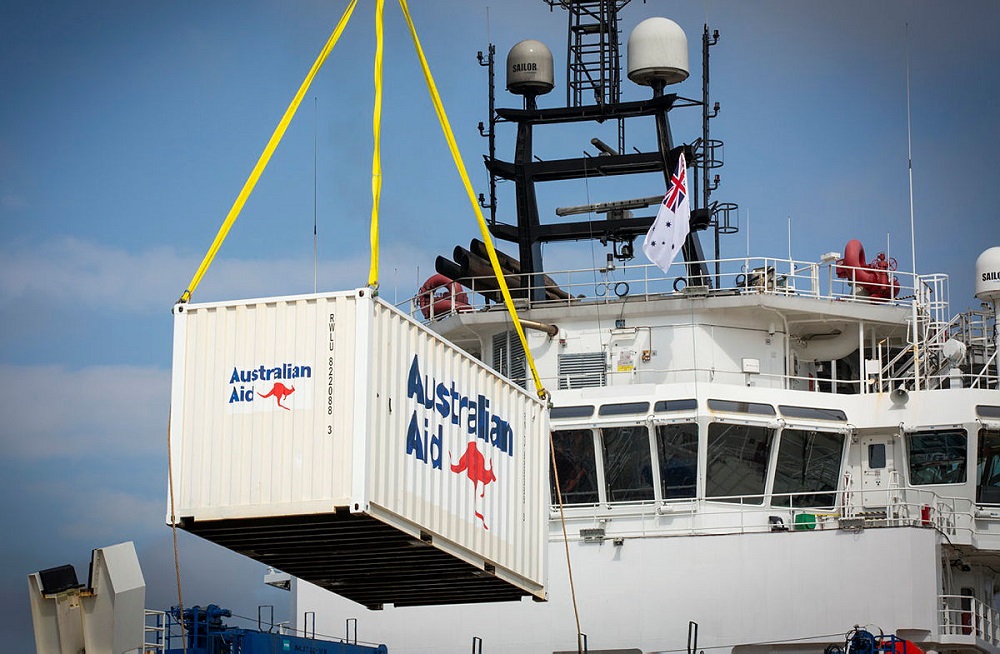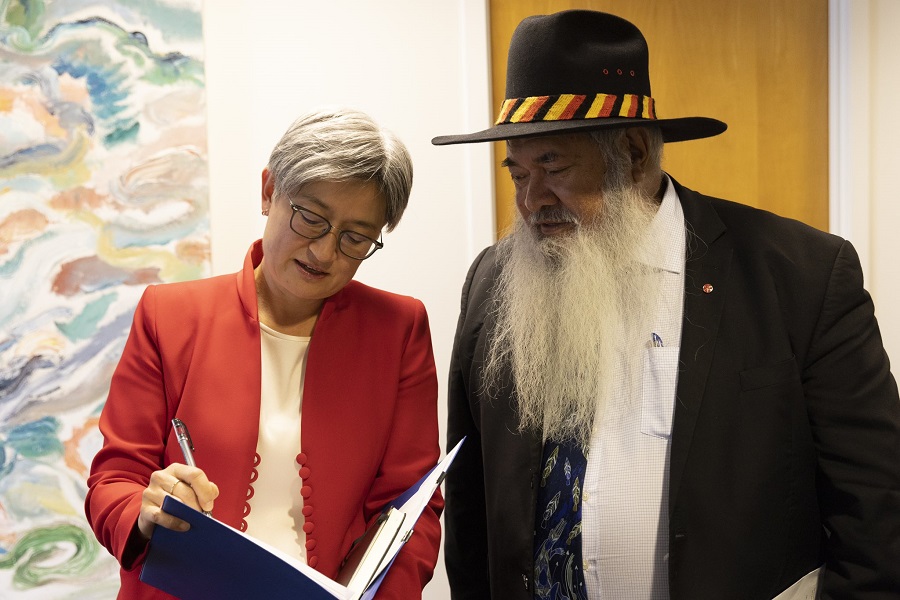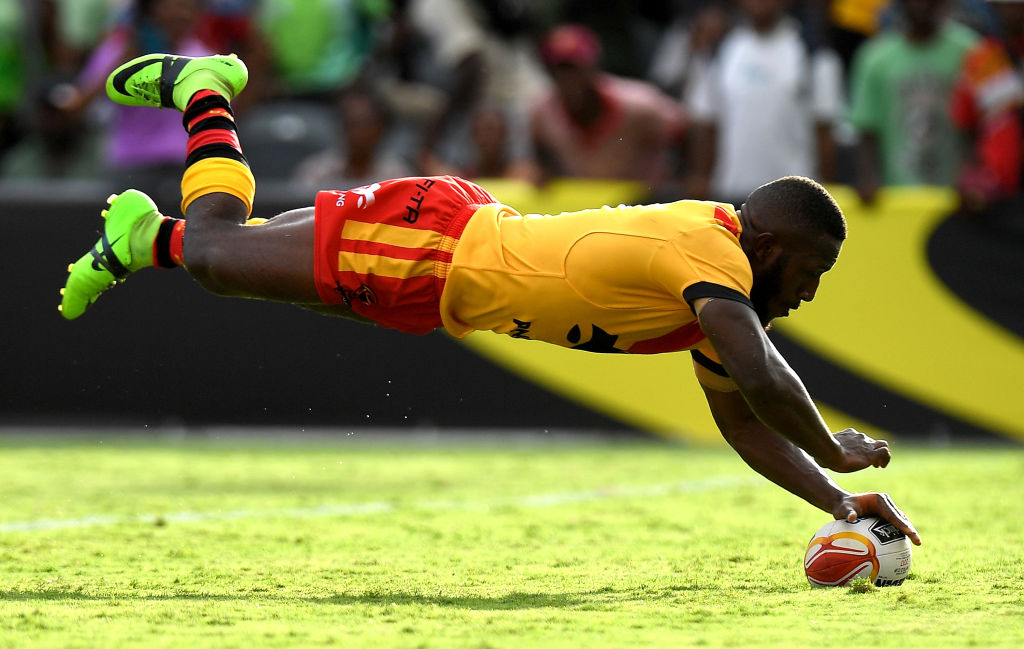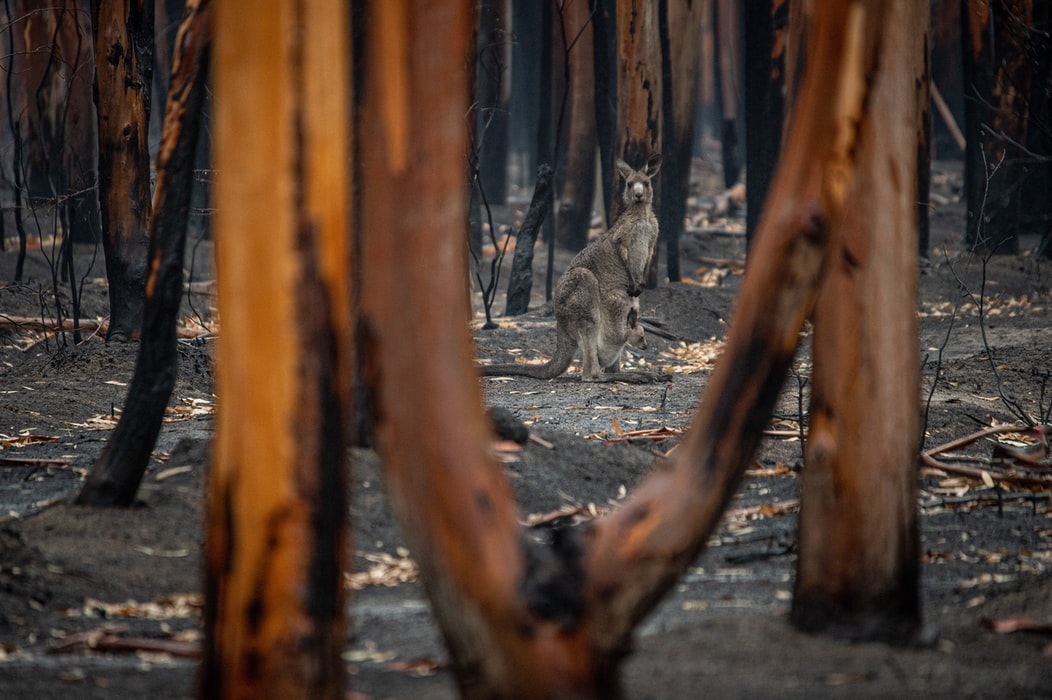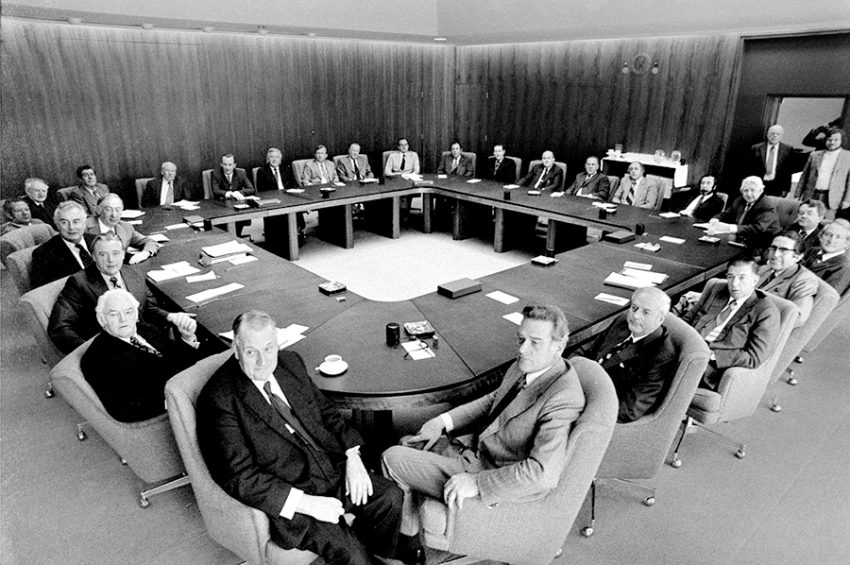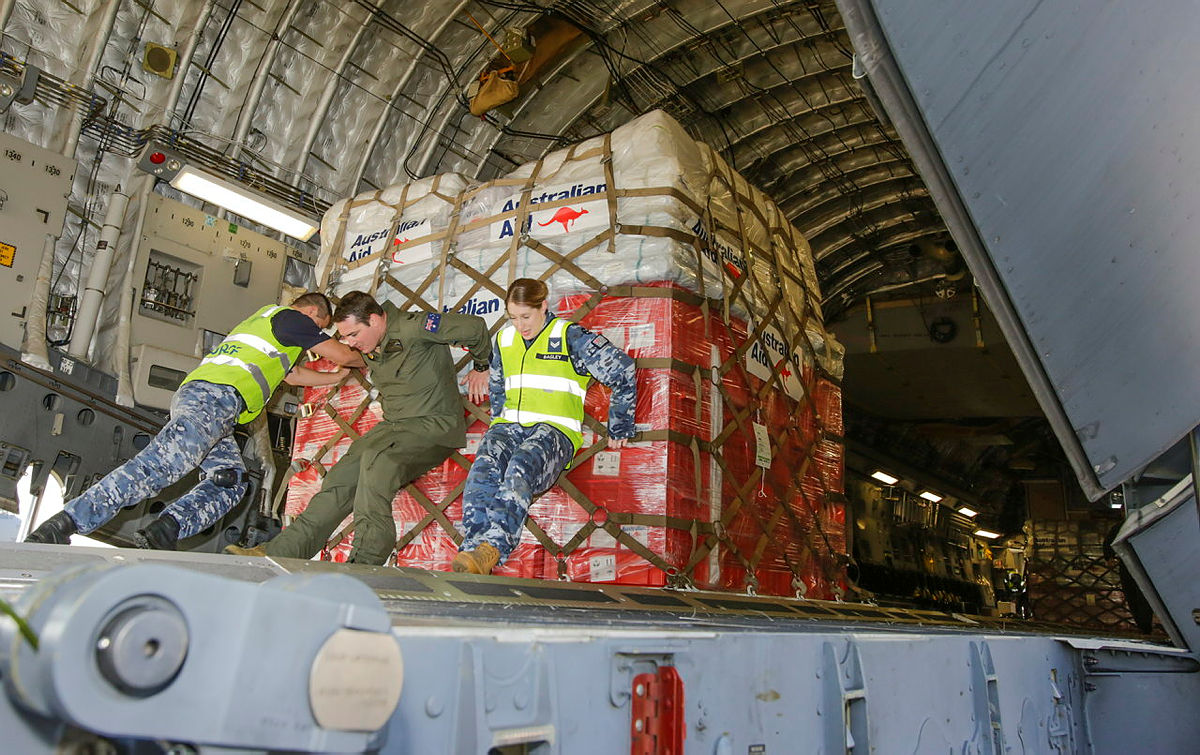
Australia heads towards a dismal achievement: halving what it spends on diplomacy in only three decades.
The Joe Biden rule (‘Show me your budget, and I will tell you what you value’) says Australia has consistently undervalued diplomacy.
Here’s the halving calculation from Tania Miletic and John Langmore:
Australian diplomacy has had a low priority throughout the last quarter century. The proportion of total Commonwealth expenditure allocated to diplomacy fell from 0.38 percent in 1995–96 to 0.22 percent in 2018–19, a decline of 42 percent. The budget announced on 6 October 2020 included forward estimates for diplomacy which will reduce their share of Commonwealth outlays even further to 0.18 percent in 2023–24. This means that by 2023–24, Australian outlays on diplomacy will have been cut by 53 percent during the previous 28 years.
Halving the proportion of spending on diplomacy at a time of rising tension is shockingly irresponsible and ensures Australia’s diplomatic service is so inadequately funded and staffed that it cannot be fully effective.
The ‘scrooge-like’ approach to diplomacy hurts our national interests, as Ben Oquist notes. Yet Canberra has been doing the scrooge for so long, he writes, revamping ‘Australia’s diplomatic architecture will require more than money; a shift in the cultural and political status we accord diplomacy is needed too’.
The scrooge effect describes significant structural forces acting on the Department of Foreign Affairs and Trade. In engineering, structural forces cause compression, tension, shear, bending and torsion; DFAT knows most of those.
The previous column described six forces pressing on DFAT, but focused only on the top of the list: the evolution and empowerment of Australia’s presidential prime minister. Turn now to the other forces doing the scrooge on DFAT:
- the birth of ministerial minders
- public service managerialism
- globalisation and the digital era
- Canberra’s national security system and mindset
- political choices and an ambivalent view of DFAT fed by ideological hostility.
Bureaucratic/public service managerialism and the new political class, the ministerial minders, started slowly in the 1970s, blossomed in the 1980s, and have been powering on ever since.
The minder mentality reaches deep into every department in Canberra. Minders are essential to make the system work, but they’ve certainly changed the system. Minders reside in Parliament House, mostly in the executive wing at the rear of the building, serving their ministers and steering a course by the four points of the parliamentary compass: power, policy, politics and personalities.
Managerialism treats the public service like a business while seeking ever-stricter political control over bureaucrats; the disciplinary talisman is the public service ‘efficiency dividend’ used to squeeze departmental expenses and staff numbers.
The jargon of managerialism is to make the public service sharper, more responsive, nimbler, more productive … and … about here the eyes start to glaze over. The ‘efficient and effective’ language (placed on par with the need to be ‘apolitical’) was at the heart of the Public Service Act 1999, which transformed the service by sweeping away the complex structure that’d evolved on the 1922 public service law.
A key objective unites minderism and managerialism: the need for control. The combination has had one particular effect in foreign affairs: curbing the power and prerogatives of ambassadors. Once, ambassadors on post presided and often ruled. No more.
In a piece on the culture of DFAT in 2004, I wrote that self-censorship had become an ambassadorial artform; well-understood protocols ensured ministers were not told what they didn’t want to hear and professional discipline in the department was reinforced by a ‘culture of compliance’.
It’s hard to be creative and dynamic when ministers and minders demand ‘no surprises’, discipline and compliance. A succession of DFAT secretaries—Dennis Richardson, Peter Varghese and Frances Adamson—have talked the talk about the department stepping up to its role as a great maker of policy. Trouble is, much of Canberra prefers to treat DFAT as a service provider rather than a policy department.
Globalisation and the digital era mean every part of the bureaucracy has some international concerns. Just as most Australians now run their own communications and media strategies (aka their smartphones), most departments in Canberra run some version of foreign policy. That’s why 30 Commonwealth agencies have staff in overseas posts.
The growth of the national security frame as the driver of international policy is a core Canberra story of the 21st century.
DFAT’s traditional friend–foe, Defence, has become part of a much bigger national security apparatus. The attacks on New York and Washington on 11 September 2001 and the Bali bombings of 12 October 2002 were seminal launch dates for Canberra’s national security machinery.
The power and purse of national security has waxed as DFAT waned.
The former senior diplomat and ambassador to China Geoff Raby argues that foreign policy has been ‘weaponised’ as the ‘intelligence, security and military establishment has taken control of Australia’s foreign policy towards China’.
For a pyrotechnic version of this debate, see the attack on ‘national security cowboys’ by Richardson (former head of Defence as well as DFAT) and the return rocket fire by ASPI’s Peter Jennings, calling for ‘more cowboy and less kow-tow’.
Politics always matters, and there’s an important Liberal Party dimension to what ails DFAT. The trek to halving spending on diplomacy, described by Miletic and Langmore, begins in 1996, the year John Howard came to power. Since then, the Liberals have been in power 75% of the time.
The Liberal choice has been clear: national security spending, not diplomacy. The liberal internationalist wing of the party has some affection for DFAT. But the party’s centre and right view the department as irredeemably leftish, with a world view rather than an Australian view. Such scorn flavoured Prime Minister Scott Morrison’s 2019 speech decrying ‘negative globalism’ and ‘unaccountable internationalist bureaucracy’.
Even when the Labor Party was in power—the six years under Kevin Rudd and Julia Gillard—the new money went to international development, not diplomacy. If the Liberal–Labor ‘golden consensus on aid’ had survived, Australia would today be an aid superpower, spending nearly $10 billion on aid, not $4 billion. The golden consensus, however, cracked on both sides of politics.
Gillard preferred budget repair to the march to the Millennium Development Goals. And Rudd records a moment of private candour in 2010 from the Liberal leader, Tony Abbott: ‘Kevin, you’ve got to agree this level of aid is just bullshit.’
Abbott acted on that sentiment when he won power in 2013, killing off AusAID as an independent executive agency reporting to the foreign minister and slashing aid. Merging AusAID into DFAT was the biggest organisational change for the department since the marriage with Trade in 1987. The Trade merger had high policy ambitions; the AusAID merger was an expression of political disdain, dismissing aid as ‘burdensome boutique business’ rather than a foreign policy priority.
The Liberal Party’s doubts about DFAT come under two broad headings: claims of political bias and doubts about its competence.
On the diplomats’ lefty bias, here’s former ambassador Mark Higgie, who had five diplomatic postings and served as an adviser to Tony Abbott:
To any Canberra insider, especially those in Coalition circles, the fact most of our diplomats are leftish is a given … The spirit of Gough Whitlam continues to hover over DFAT’s R.G. Casey Building in Canberra. Most of our diplomats dream of an Australia less aligned with the US and have an often unqualified enthusiasm for the UN.
This caricature of Oz diplomats says more about the hang-ups and prejudices of the Liberal Party than it does about DFAT. The Higgie description of Oz diplomats as left-leaning bureaucratic fops got a comprehensive rebuttal from one of the best diplomats of his generation, John McCarthy:
Most officers just want sensible workable policies and to get on with the job. They accept politics as a fact of life, not as the force driving them. That force is the national interest. A few are lefties. Some are conservative. Most are in the middle somewhere. Five I know in the past couple of decades became secretaries of defence. Many at the top of the intelligence community—not the soft side of politics—spent their early careers in DFAT.
The more significant fight is over DFAT’s competence, especially within the Canberra system.
Dave Sharma, a former ambassador who’s now a Liberal MP, says his old department needs more resources but to win them it must become more focused. The reason Australia has one of the smallest diplomatic services, with the one of the smallest diplomatic footprints, in the G20? The fault, Sharma writes, lies with the department itself:
In significant part, this has been down to a failure of the Department of Foreign Affairs and Trade in the Canberra bureaucratic struggle for budget and resources. It has failed to sell its value to the political class, to cultivate champions within the cabinet, or position itself with solutions to the government’s challenges.
Sharma says Defence, Home Affairs and intelligence agencies have been better at presenting solutions to government and their budgets have grown accordingly: ‘Other than its own portfolio ministers, DFAT does not have many champions around the cabinet table—and this is because, aside from a few high-profile ambassadors, it fails to do the retail politicking necessary to sell its worth in Canberra.’
The 50-year journey since Foreign Affairs cast off its External Affairs identity has seen the creation of a great department of state that suffers the bureaucratic version of an anaemia problem.
DFAT has an admirable—often outstanding—record in navigating the rapids of international diplomacy; it’s the friends and foes and political masters in Canberra that truly control how great it can be.


